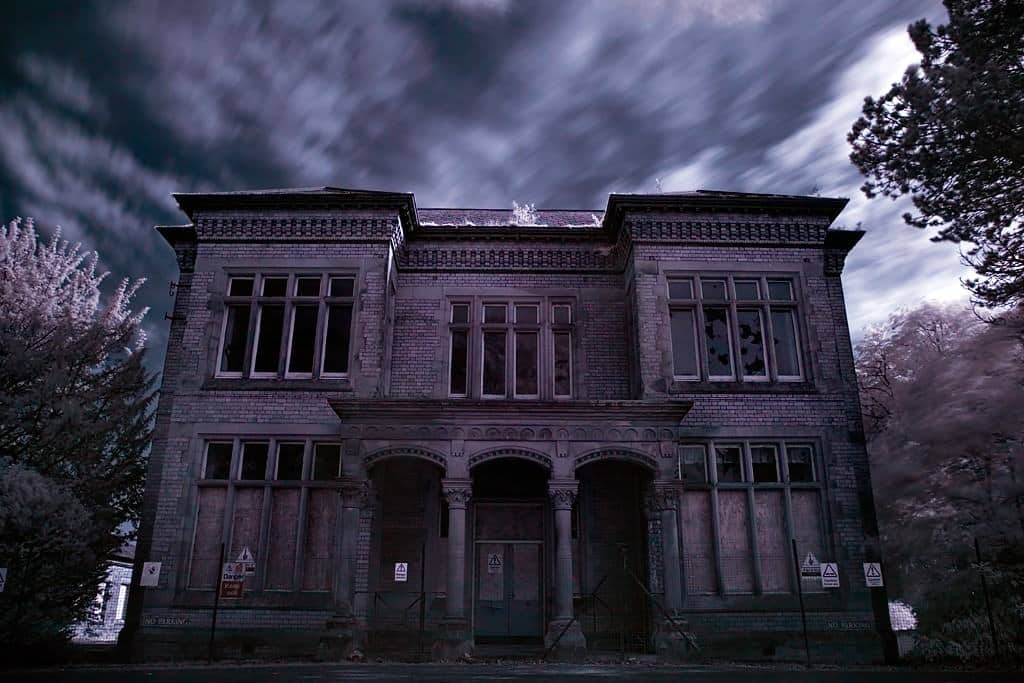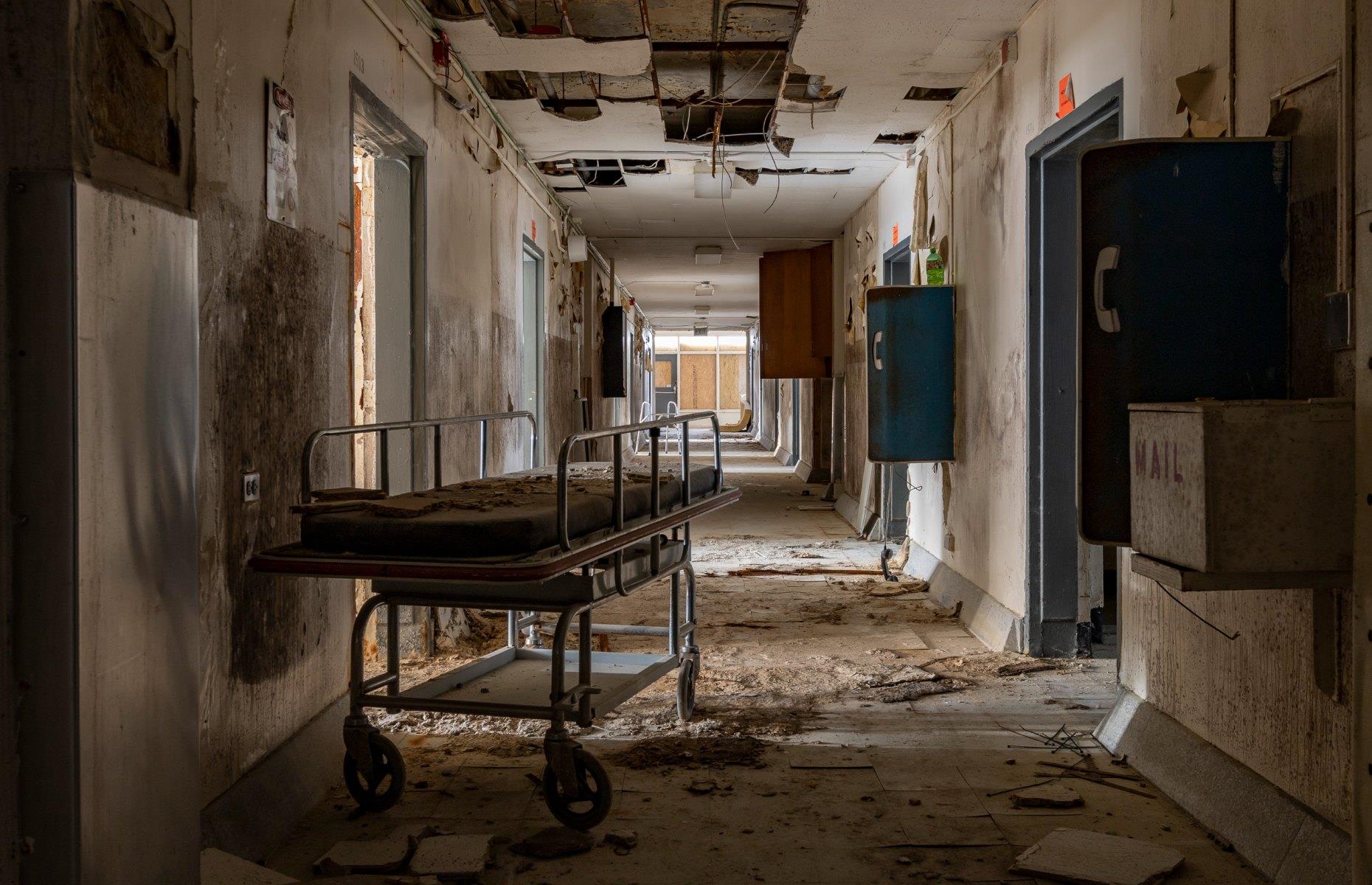
Echoes in the Halls: Unmasking the Enduring Mystery of Haunted Hospitals
Hospitals, by their very nature, are bastions of hope and healing, places where the most profound moments of human existence – birth, death, suffering, and recovery – play out daily. Yet, beneath the sterile surfaces and the relentless rhythm of medical care, many of these venerable institutions harbor a darker, more enigmatic reputation: they are said to be haunted. From the spectral figures of long-dead patients and overworked nurses to disembodied whispers and inexplicable cold spots, the phenomenon of haunted hospitals is a pervasive and compelling narrative that transcends cultures and centuries.
The fascination with these spectral sanctuaries isn’t surprising. Hospitals are liminal spaces, thresholds between life and death, where emotions run raw and intense. Every brick, every floorboard, could be seen as a silent witness to countless tragedies and triumphs. It is in these highly charged environments that the veil between worlds is often perceived as thinnest, making them prime candidates for paranormal activity.
"There’s an undeniable gravitas to hospitals," says Dr. Eleanor Vance, a cultural historian specializing in folklore and urban legends. "They’re repositories of human experience at its most extreme. When we talk about residual energy or spirits lingering, it makes a certain intuitive sense that such powerful events could leave an imprint on a place."

The Anatomy of a Hospital Haunting
The types of hauntings reported in hospitals are as varied as the ailments they once treated. Visual apparitions are common: a nurse in an old-fashioned uniform gliding through a corridor, a patient sitting quietly in a vacant bed, or a doctor making rounds long after his shift ended. These figures often appear solid and lifelike before vanishing abruptly.
Auditory phenomena are equally prevalent. Staff and visitors frequently report disembodied voices, whispers, groans, or cries emanating from empty rooms. The sound of footsteps on silent floors, the rustle of unseen gowns, or the distinct clatter of medical instruments can send shivers down the spine. In some cases, the sounds of old medical equipment, long since removed, are said to persist.
Beyond sight and sound, physical manifestations add another layer to the mystery. Objects are reported to move on their own – wheelchairs rolling down halls, doors opening and closing, lights flickering without electrical fault. Unexplained cold spots, the sensation of being watched, or even a spectral touch on the arm are common experiences that defy conventional explanation. Some also report olfactory experiences, catching whiffs of long-forgotten perfumes, the scent of antiseptic from a bygone era, or even the faint aroma of tobacco smoke.
Waverly Hills Sanatorium: A Symphony of Suffering
Perhaps no hospital embodies the chilling allure of the haunted more profoundly than Waverly Hills Sanatorium in Louisville, Kentucky. Opened in 1910 to combat the devastating tuberculosis epidemic, Waverly Hills became a place synonymous with suffering and death. At its peak, the facility was a city unto itself, housing hundreds of patients, many of whom never left its confines alive. Estimates suggest that over 63,000 people perished within its walls, their bodies often transported through a discreet 500-foot tunnel, grimly nicknamed the "Death Tunnel," to avoid alarming other patients.
The sheer volume of death and the desperate hope that preceded it have cemented Waverly Hills’ reputation as one of the most haunted places in America. Reports from former staff, urban explorers, and paranormal investigators include:
- Room 502: Believed to be haunted by the spirit of a nurse who committed suicide, or was murdered, in 1928. Visitors report seeing her apparition, hearing her cries, and experiencing objects moving.
- The "Death Tunnel": Voices, shadowy figures, and the feeling of being touched are frequently reported. Many claim the tunnel still echoes with the despair of those who passed through it.
- Timmy: A playful ghost of a young boy is said to interact with visitors, throwing balls and calling out names.
- The Crying Woman: The distinct sound of a woman weeping can be heard in various parts of the sanatorium, particularly on the upper floors.

"Waverly Hills isn’t just haunted; it’s steeped in a history so tragic it feels palpable," remarks Sarah Jenkins, a paranormal investigator who has spent countless nights at the sanatorium. "You walk through those halls, and you can almost feel the weight of all that suffering. It’s a symphony of echoes."
Edinburgh Royal Infirmary: Ancient Echoes in a Modern City
Across the Atlantic, in the historic heart of Scotland, the former site of the Edinburgh Royal Infirmary (originally founded in 1729) carries its own legacy of spectral residents. While the original buildings have mostly been repurposed or replaced, the stories of its past linger, often attached to the remaining historical structures and the very ground upon which it stood.
This infirmary was at the forefront of medical advancements, but also a witness to the brutal realities of pre-anesthetic surgery and early medical experimentation. With centuries of human agony and the constant presence of death, it’s a prime location for residual hauntings.
One of the most enduring legends is that of the Grey Lady, a benevolent spirit believed to be a former nurse who continues to tend to patients. She has been seen comforting the sick, moving through wards, and even interacting with staff members who are unaware of her spectral nature until she vanishes. Other reports speak of stern-faced surgeons from the Victorian era observing operations or appearing in the anatomy theatre, perhaps overseeing the dissections that once took place there.
"Edinburgh is a city built on layers of history, and its oldest hospital is no exception," notes Alistair MacGregor, a local historian. "The stories of the Royal Infirmary’s ghosts are part of the city’s fabric, a reminder that the past isn’t always as buried as we might think."
Aradale Lunatic Asylum: A Century of Torment
In Ararat, Victoria, Australia, stands the chilling Aradale Lunatic Asylum, which operated for 130 years until its closure in 1998. During its long and often brutal history, over 13,000 patients died within its walls, many due to neglect, harsh treatments like electroshock therapy and lobotomies, or simply old age and despair. The asylum was a place of isolation, despair, and untold suffering for those deemed "insane" by society.
Today, Aradale is considered one of Australia’s most haunted locations. Visitors and former staff recount experiences ranging from deeply disturbing to utterly terrifying:
- Nurse Kerry: A common apparition is that of a young nurse, believed to be "Nurse Kerry," who walks the women’s wards. Her presence is often accompanied by a sudden drop in temperature.
- The Old Man: A male entity is frequently reported in the men’s wing, often seen peering out of windows or heard shuffling through the corridors.
- Unexplained Voices and Cries: The sounds of disembodied whispers, screams, and the unsettling laughter of children are common, particularly in areas like the "J Ward," which housed the criminally insane.
- Physical Interactions: Reports include being pushed, having hair pulled, and experiencing sudden, overwhelming feelings of sadness or anger.
"The energy at Aradale is heavy, almost oppressive," states Mark Stevens, a tour guide who has led countless groups through the asylum. "You don’t just hear the stories; you feel the weight of all that past suffering pressing down on you. It’s not just ghosts; it’s the echoes of forgotten lives."
The Skeptical Lens: Explaining the Unexplained
While the allure of a supernatural explanation is strong, particularly in places with such intense histories, science offers several rationales for perceived paranormal activity in hospitals.
- Infrasound: Low-frequency sound waves, inaudible to the human ear, can cause feelings of anxiety, dread, and even visual distortions. Old buildings, ventilation systems, or even natural phenomena can generate infrasound.
- Electromagnetic Fields (EMF): Fluctuations in EMF have been linked to feelings of being watched, dizziness, and paranoia. Hospitals, with their complex electrical systems and medical equipment, can be hotbeds of EMF variations.
- Pareidolia and Apophenia: The human brain is wired to find patterns and meaning in random stimuli. A shadow can become a figure, a creak can become a whisper. In an environment already primed for ghost stories, these tendencies are amplified.
- Psychological Factors: The stress and emotional intensity experienced by hospital staff and visitors can lead to heightened suggestibility, sleep deprivation, and even mild hallucinations. The power of expectation and collective belief also plays a significant role. If a place is known to be haunted, people are more likely to interpret ambiguous events through that lens.
- Old Buildings and Infrastructure: Drafts, settling foundations, old pipes, and creaking floorboards can all create sounds and movements that are easily attributed to the supernatural in a spooky setting.
"It’s easy to jump to conclusions when confronted with something unsettling in a place like a hospital," explains Dr. Lena Karlsson, a cognitive psychologist. "Our brains are excellent storytellers. When you combine a suggestive environment with the innate human desire to find meaning, even in the random, you get ghost stories. That doesn’t diminish the experience for the individual, but it offers alternative explanations."
The Enduring Mystery
Despite scientific attempts to demystify these occurrences, the stories of haunted hospitals persist, captivating our imaginations and challenging our understanding of reality. For those who claim to have experienced these phenomena firsthand, no amount of scientific explanation can fully account for what they witnessed or felt. The raw, unfiltered emotion of an encounter with the unknown often leaves an indelible mark.
Perhaps the enduring power of haunted hospital tales lies in their ability to tap into our deepest fears and hopes. They speak to the universal human experience of confronting mortality, the lingering question of what lies beyond, and the comfort – or terror – of believing that our loved ones, or even strangers, might not truly be gone.
Whether these spectral residents are genuine echoes of past lives, the collective manifestation of grief and trauma, or merely the fascinating tricks of light, sound, and psychology, haunted hospitals remain compelling narratives. They serve as poignant reminders of the intense human dramas that unfold within their walls, whispering stories of life, death, and the enduring mystery that surrounds them all. In the quiet hours, when the bustling corridors fall silent, one can almost hear the faint, timeless whispers of those who linger, forever bound to the places where their earthly journeys reached their dramatic, and sometimes tragic, end.


